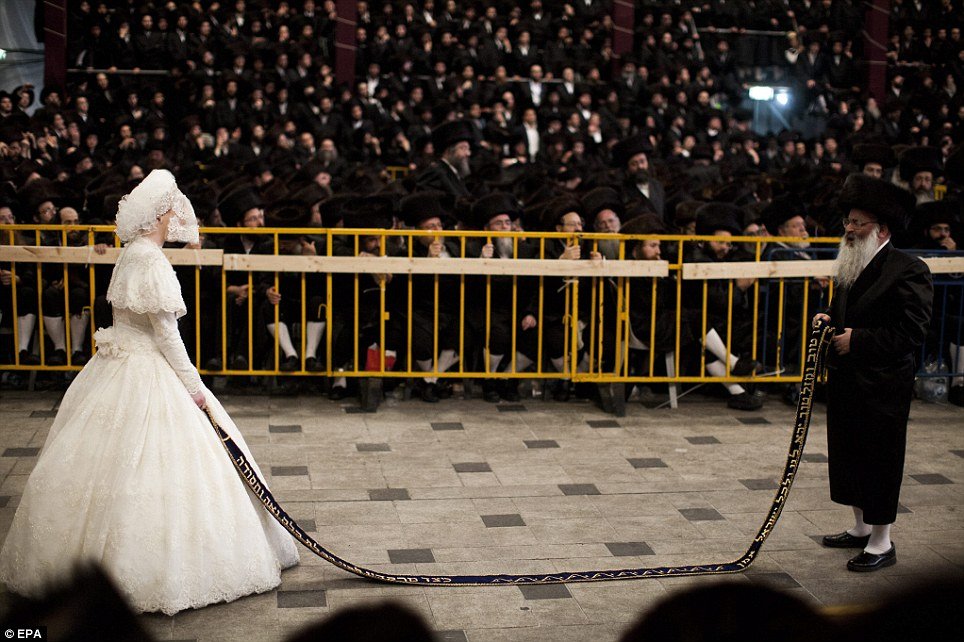
Traditional Jewish weddings consist of two separate parts, the betrothal ceremony, known as erusin or kiddushin, and the actual wedding ceremony, known as nisuin.
The first betrothal ceremony sees the groom give a wedding ring to the bride. During this part of the service, the bride is prohibited from talking to all other men.
The wedding ceremony then takes place underneath a large four-poled stand with a canopy overhead known as a chuppah so the groom and his veiled bride can be married underneath the sky.
The bride’s wedding veil takes various forms among the different Jewish communities. Some Hasidic brides wear a heavy cloth veil that, Hasidic Jews believe, protect the bride’s modesty by allowing her to avoid guests’ gazes while she stands under the wedding canopy.
The veil also recalls the Matriarch Leah, whose face was covered so heavily that Jacob did not know she was not Rachel at the wedding ceremony. The bride only has to wear the veil during the ceremony.
After the ceremony the bride and groom spend an hour together before the bride re-enters the chuppah and, after gaining her permission, the groom joins her. The couple is then blessed over a cup of wine at the conclusion of the ceremony.
All the male guests dressed in black and wore traditional shtreimel hats for the occasion, which traditionally separates the men from the women.
After the wedding ceremony, the bride takes part in the Mitzvah tantz ritual – where members of the family and honored rabbis dance in front of her and then with the groom.

The bride stands perfectly still, holding one end of a long sash while rabbis, the groom’s father, her own father or her grandfather holds the other end and dances with her.
According to the Talmud, it’s considered a great honor to entertain a new bride and to dance for her during her wedding.
Only a few women take part in this section of the celebrations.
Members of the congregation held hands and danced during the ceremony and sweets were handed out to children before the wedding party enjoyed a traditional meal.
Hasidic Jews wear clothes similar to that worn by their ancestors in 18th and 19th century Europe – and this style of attire also helps them to focus on their sense of tradition and spirituality.
The biggest Hasidic communities are found in Israel and the U.S. There also smaller groups in Canada, England, Belgium and Australia.
Their lives revolve around religious study, prayer and family – and theirs is a world without television, films, the internet or secular publications.
The men generally have beards and sidelocks (peyot).
Women tend to wear long skirts and shirts with long sleeves and high necklines as they adhere to strict guidelines of modesty.
After the women get married, they cover their heads with either scarves, hats or wigs (known as “sheitels”).
[youtube GHWqzbiqFZI]